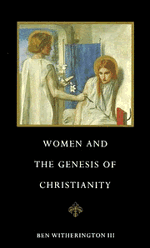Book contents
13 - Women and the Third Evangelist
Published online by Cambridge University Press: 10 January 2011
Summary
Women in the ministry of Jesus
Lk. 4.16 – 30 indicates that the liberation of the oppressed and poor is an essential part of any ministry modeled on that of Jesus. Luke structures some of his Gospel material to illustrate the fulfillment of Isa. 61.1 – 2 in the ministry of Jesus: preaching to the poor, giving sight to the blind, setting the oppressed free, and proclaiming “the acceptable year of the Lord.” He stresses again and again that women are among the oppressed that Jesus came to liberate.
Another structural element in Luke – Acts is Luke's interest in male – female parallelism. This is evident both in Luke's noted pairing of parables, one about a man and one about a woman, and in his selection of special material about women. As Flender concludes: “Luke expresses by this arrangement that man and woman stand together and side by side before God. They are equal in honor and grace; they are endowed with the same gifts and have the same responsibilities …”
A good deal can be learned about Luke from the way he edits his Markan and sayings source material, for here we are able to compare the source material and its redaction. For instance, at Lk. 18.29 – 30 (Mk 10.28 – 30) we read: “Truly, I say to you, there is no man who has left house or wife or brothers or parents or children, for the sake of the kingdom of God, who will not receive manifold more in this time, and in the age to come eternal life.”
- Type
- Chapter
- Information
- Women and the Genesis of Christianity , pp. 201 - 224Publisher: Cambridge University PressPrint publication year: 1990

